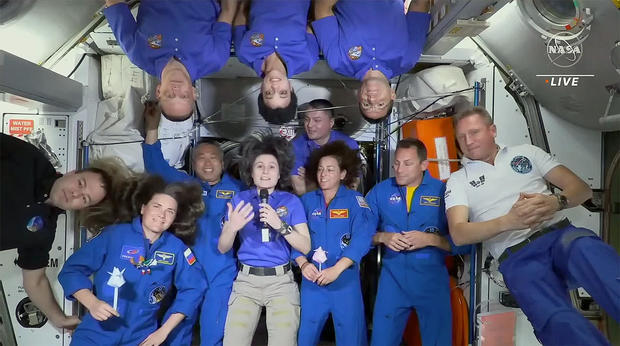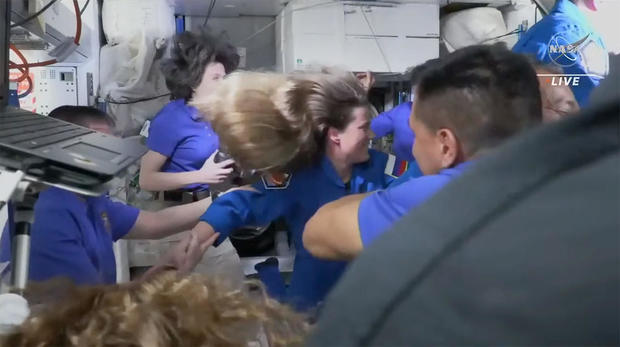7.10.2022
The SpaceX Crew Dragon Endurance wrapped up a 29-hour rendezvous with a picture-perfect docking at the International Space Station on Thursday, bringing two NASA astronauts, a Japanese flier and a Russian cosmonaut, to the outpost a day after launch from the Kennedy Space Center.
Spacecraft commander Nicole Mann, co-pilot Josh Cassada, Japan's Koichi Wakata and cosmonaut Anna Kikina, the first Russian to fly on a Crew Dragon, monitored a series of automated rendezvous rocket firings as the SpaceX capsule moved in, docking at the station's forward port at 5:01 p.m. EDT.

"Docking sequence complete," radioed SpaceX communicator Jake Vendl from the company's Hawthorne, California, control room. "Crew Dragon Endurance, and Koichi, Nicole, Josh and Anna, welcome to the International Space Station."
"Thank you so much!" Mann replied. "Crew 5 is happy to have finally arrived at the International Space Station. Endurance is a very proper name for our training, mission and the spacecraft. ... We are looking forward to getting to work."
At 6:49 p.m., Mann and her crewmates floated into the station to hugs and handshakes from Crew 4 commander Kjell Lindgren, Bob Hines, Jessica Watkins and European Space Agency astronaut Samantha Cristoforetti, along with Sergey Prokopyev, Dmitri Petelin and NASA astronaut Frank Rubio.

The Endurance crew is replacing Lindgren, Hines, Watkins and Cristoforetti, who plan to return to Earth on Oct. 13 aboard Crew Dragon Freedom, which carried them to the space station last April. Prokopyev, Petelin and Rubio, who arrived at the lab aboard a Russian Soyuz ferry ship on Sept. 21, replaced an earlier Soyuz crew that returned to Earth on Sept. 29.
Kikina is the first Russian to fly aboard a U.S. spacecraft in nearly 20 years. She and Rubio were launched under a new agreement between NASA and Roscosmos, the Russian space agency, that ensures at least one astronaut or cosmonaut is always aboard the space station even if a Crew Dragon or Soyuz is forced to depart early, taking its crew with it.
Without the seat-swap arrangement, a medical emergency or some other major problem could leave an all-Russian or all-NASA crew aboard without the expertise to operate the other nation's systems.
"We signed an agreement with Roscosmos for one flight this year, one flight next year and one flight in '24," said Joel Montalbano, manager of the NASA space station program at the Johnson Space Center. "That's for all SpaceX missions."
NASA and its partner agencies are working to extend station operations to the end of the decade. Assuming Russia eventually signs on for at least part of that planned extension, Montalbano hopes the seat-swap agreement will be updated with additional flights.
Quelle: CBS News

